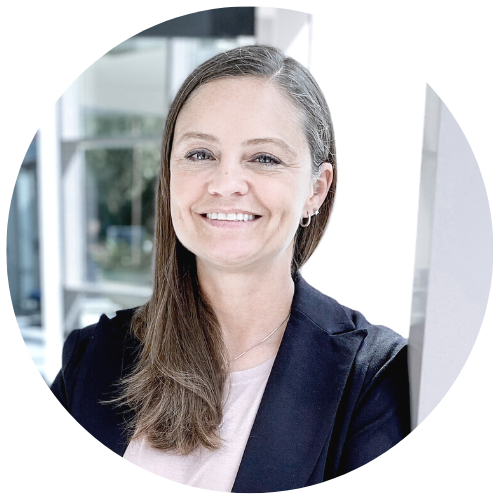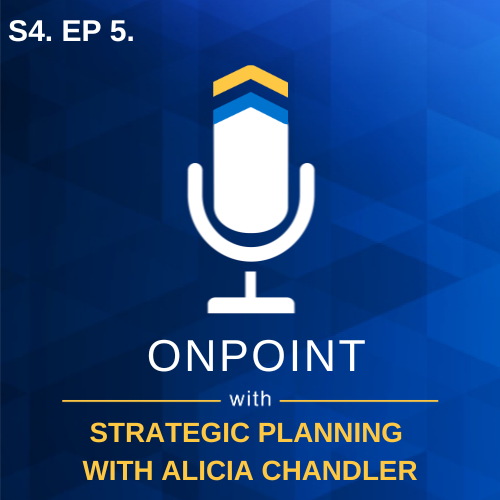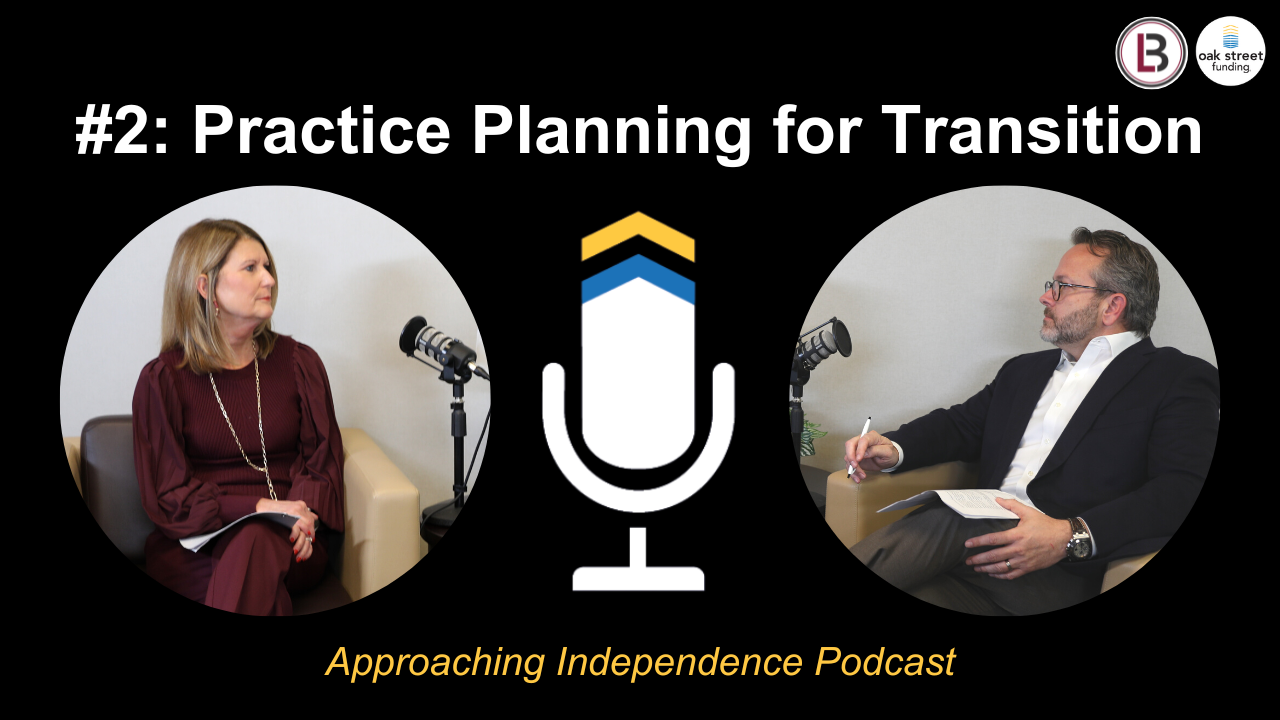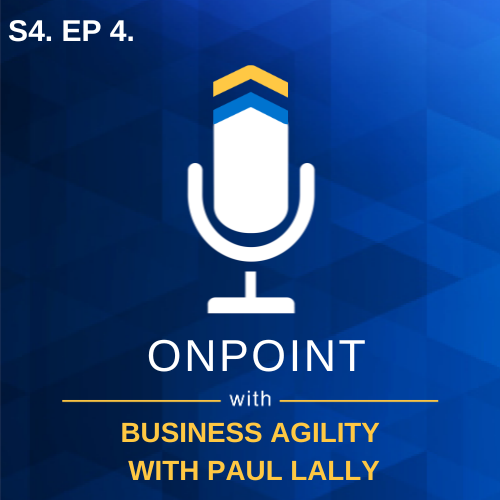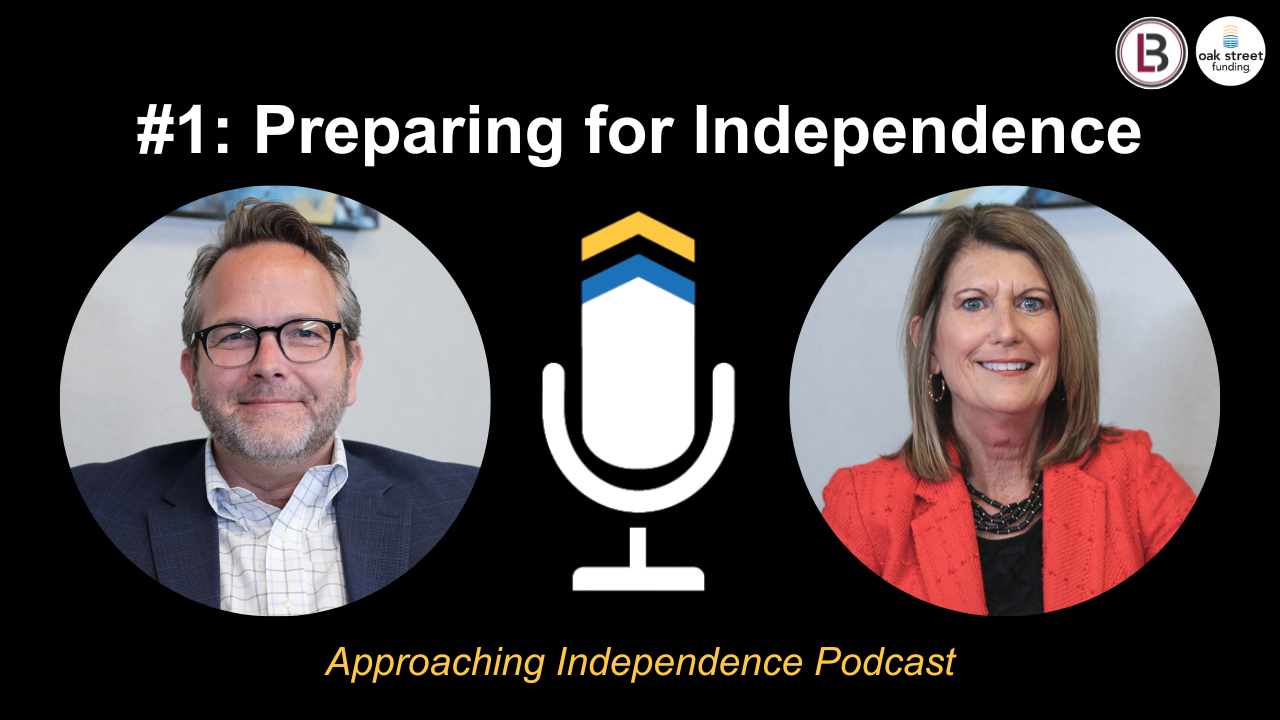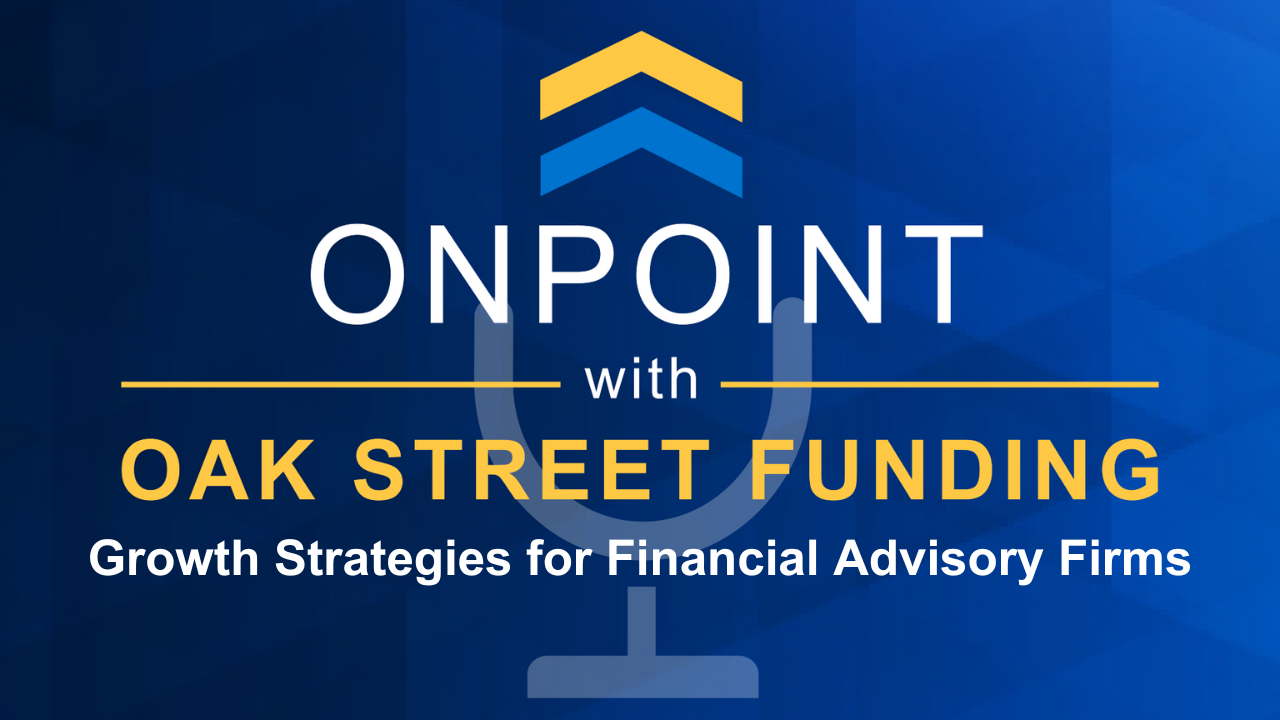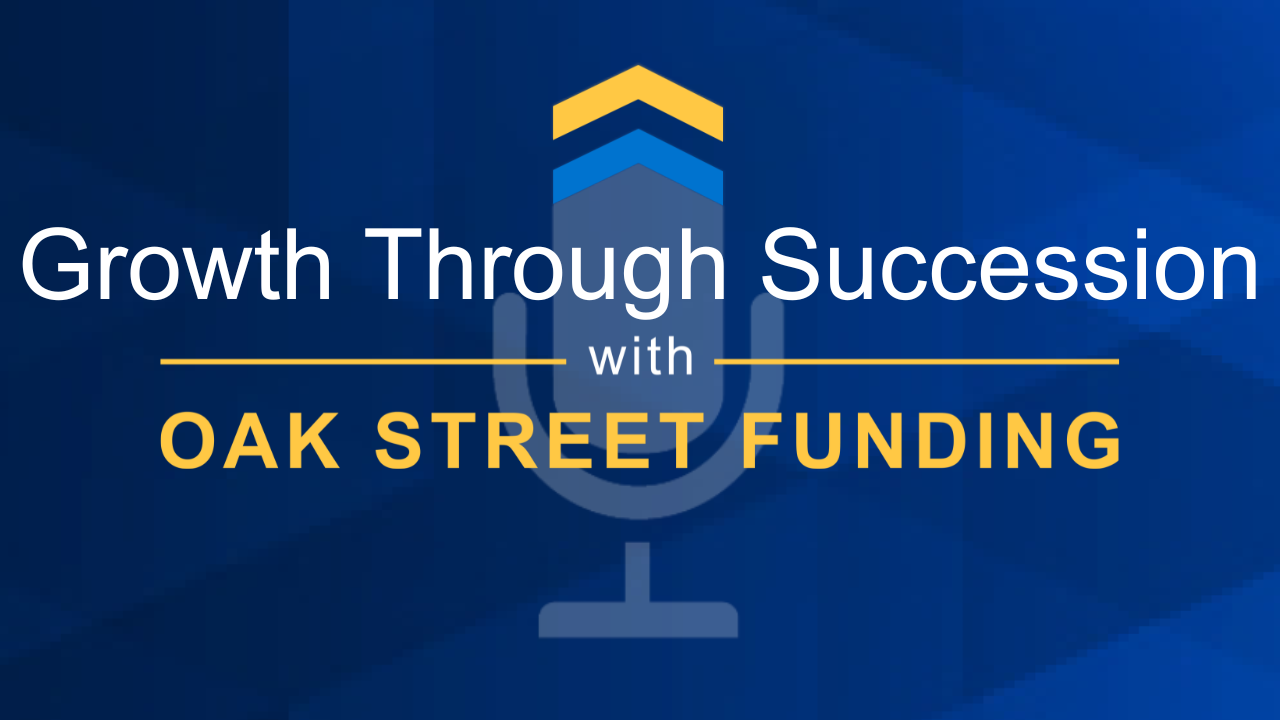S4 EP. 5 - Strategic Planning: Implementation and Getting Employee Buy-In
- 0.5
- 1
- 1.25
- 1.5
- 1.75
- 2
Bridget Haight: Hello and welcome to OnPoint, a podcast by Oak Street Funding, where we bring research and data- backed insights to dig into the minds of industry leaders to learn how to stand out, navigate, and break through this ever- changing industry. I'm your host Bridget Haight, and you can support this podcast by following us on Spotify, Apple Podcasts, on our website, or wherever you get your podcasts. We'll be there hanging out, talking to industry leaders and ready to empower you to grow your business. Let's get OnPoint. So today I am delighted to bring back the lovely Alicia Chandler back to the show. Alicia is president of Oak Street Funding where, like most of you, she's currently leading an organization into 2024. Today we're going to chat about strategic planning and some tips for implementing it throughout the year. Welcome, Alicia.
Alicia Chandler: Thank you for having me.
Bridget Haight: Yes, thank you so much for being here. You are a very busy lady. So let's just start with an overview. Where does an organization start with the strategic planning process?
Alicia Chandler: So one of the most important things when you are discussing the strategic project for the upcoming year is to get with your executive or management team and undertake a SWOT analysis. And so SWOT, S- W- O- T, not swatting a fly. So it's an acronym. So we have S for strengths, W for weaknesses. Those are internally focused, so on the organization itself. And then you also have opportunities and threats, so the O and T. And those are external opportunities or threats for your organization.
Bridget Haight: Okay, great. So can you give an example or give some strengths and weaknesses of what SWOT brings out?
Alicia Chandler: Sure. So I can talk a little bit about Oak Street itself because we've been doing this for several, well for a number of years, and we report this at the beginning of our year in our book that we put out. So a strength, for example, for Oak Street is our deep industry knowledge and expertise. We have people that have been with us for more than a decade or have more than a decade of experience in the specific kinds of businesses that we lead. So that's an example of an internal strength. And so then when you're talking about a weakness, that's going to be something that internally you look at as a management team and think where is our weakness? Where are we exposed? And so you just need to be honest with yourselves. And that can change from year to year. Usually, your strengths are pretty consistent and you could have additional ones each year, but the weaknesses could be just something that's maybe because of the way the economy has changed, that internally you need to take a look at how some things, maybe your processes or procedures that you need to improve. When you're thinking about opportunities and looking externally, you might think, " Well, maybe we could get into a new line of business? For example, a few years ago, actually several years ago when the bank had purchased Oak Street, we looked at getting into the RIA space, which is now one of our largest lines of business. And so you take a look at what opportunities are out there in the market, where could we break in? And just things like that. Threats are external threats. And of course, the biggest external threat right now is the high interest rates. No one can hide from that. It's just a fact of everyday life in the lending industry. So those are the types of things that you look at from an external threat position.
Bridget Haight: Now I need to ask you, once someone does complete the SWOT analysis, what are the first next steps? How can someone take action once it's all finished, the SWOT?
Alicia Chandler: So once you finish your SWOT analysis, you have to think through, based upon say that weakness, what steps can we take to address it? And so based upon that, you start building out a project. If it's a technology, a lack of some type of technology per se. Okay, so who needs to be involved? Who needs to think about why there's that perceived lack or whatever the case may be, wherever the shortfall is, who can help determine what types of steps we need to take for that project? Who needs to be involved? What are the timeframes? And so you just take a look at each of those items within the SWOT itself and the strengths, the weaknesses, the opportunities and threats, and really just think about how you build upon that and can there be specific projects that relate back to address specific items that came up within the SWOT itself.
Bridget Haight: Okay. Great, thank you. So what are Oak Street Funding's key strategic priorities for 2024 and how did you decide on them?
Alicia Chandler: So our key strategic priorities for 2024 are keeping in line with the themes that we've had, that we had last year, but with different focuses. So the first one is employee engagement. Employee engagement has been a top priority of not only within Oak Street, but at our parent company level as well. We get Gallup survey results and we take a look at what the employees are thinking, feeling based upon those survey results across a variety of areas. And then we take a look, an honest look at where do we need to focus our time and our energy and our effort to make sure that everyone is engaged as possible, which then is going to lead into the second focus, which is customer experience. So if you have employees that are engaged, they enjoy their job, they're happy to make a customer's day better, then that's going to lead to a better customer experience. And customer experience, again, it can be from the way someone treats a customer to the processes and procedures that could be a part of that type of focus. And the final focus is going to be growth. Of course, we're always looking to grow. Every year, we're looking to grow, whether it be through a new product line or within a certain line of business, but just overall growth and how we get there through various strategic plans that we set out.
Bridget Haight: Great, thanks for that. So we want to spend most of this podcast about implementing strategic plans, as usually by December the strategic plans are already made. So when a plan has been put into place, how do you communicate the strategic plan to the rest of the organization? How do you communicate it?
Alicia Chandler: Sure. The first thing we do is we like to meet with the employees at one of our monthly lunches or gatherings that we do upstairs and talk about the strategic plan, the SWOT for the upcoming year. And then we also put together an actual book for the upcoming year that is going to contain our SWOT analysis, all our strategic plans, our themes, any origination goals, budgets, things like that. It's going to have from front to back, it's going to have all that information. And we will give that out to all the employees. We will provide a copy to the bank, to our leadership at the bank and the board, and we will meet with the bank's board in the upcoming year and we will go through that as well. So we...
Bridget Haight: It's a hard copy book.
Alicia Chandler: It is a hard copy.
Bridget Haight: How nice.
Alicia Chandler: And it's very beautiful. It takes a lot of effort. We have employees pictures in it. It's actually really fun. I got to see the new proposed cover yesterday. And so...
Bridget Haight: But there's something nice about just having something that you can actually hold and look through.
Alicia Chandler: It is. And you can keep it on your desk the whole year. So I have mine on my desk. I know a lot of my colleagues do. When I go by, I see it there. And you can just look each month, are we on plan? Are we on target? What did we say about this particular project? And so it just gives everybody that same information to go from.
Bridget Haight: That's brilliant. So how do you get and keep employee buy- in throughout the process of implementation?
Alicia Chandler: So I think the biggest key to that is just the honesty and being open. If you convey the why behind it and everyone understands, then it's a lot easier to get everyone on the same page. And then my biggest thing is just encouraging people to give feedback, constructive feedback. I think sometimes people are a little hesitant to come to me even when I was general counsel and say, " Well, I don't agree with that?" or" Why is that?" Or even question something. But that's the only way we're going to grow is if people bring their honest feedback. Because I don't have all the answers and I have a great team, but again, not everybody is going to have all the answers for everything. So it needs to be a team effort and I think that's the best way to do it.
Bridget Haight: Absolutely. I agree. So who is accountable for implementing the strategic plan and how do you make sure that they know what they're accountable for?
Alicia Chandler: Who's accountable? That is going to be the project leader and the people that are on that team.
Bridget Haight: Okay.
Alicia Chandler: And the way to hold those people accountable for any of the projects is to set those deadlines and measure them on a monthly basis at the meeting and have those people at the table talking about the status of their project. And if they've not met deadlines, what is holding it up? Is there something that we can do to help them further that project? Or has something come up that that project isn't relevant anymore? You just never know. So you set things at the end of the year, you go into the next year and sometimes projects or priorities change and you have to make a change as well. And you can't be scared to do that. So yeah, so you just meet with everyone and figure out what's going on and if there's a way to help them if they're behind.
Bridget Haight: Okay. So what are the specific action plans and timelines for achieving strategic priority when preparing to implement the plan? Lots of things come up. How do you make sure the strategic plan maintains a top priority?
Alicia Chandler: So one of the ways that we make sure that it maintains its top priority is we put it on our monthly scorecard.
Bridget Haight: Okay.
Alicia Chandler: We track, it's this Excel, I think it's Excel. I don't know, there's this special program that the project managers have.
Bridget Haight: You just mentioned scorecard. Can you explain? I don't know. Can you explain what that is?
Alicia Chandler: Yeah, so a scorecard is an internal measurement of how you're meeting all of your plan goals. So for example, we say that for 2023, we wanted to hit X millions of dollars in loan originations. And so the scorecard on a monthly basis will say, " Here was your budget for this month. Here's how many loans you close, here's your difference." So you're measuring your goals against the actual month- to- date or year- to- date. So some of them you can do year- to- date, some of them are just the actual monthly numbers, but it's just an internal measurement to see how you're doing against your projects and your various goals. And it is very helpful. And we do track it. It's one of the lines on our scorecard and it has a certain percentage. We expect that we'll get these projects done by this month or these particular steps, and then we say, " Is that 10% done, 20% done, 30% done," whatever the numbers are. And you track that. So it's always top of mind for everyone.
Bridget Haight: Okay. Seems simple. I bet it's not as simple as you make it sound. It's brilliant. All right, so how should an organization measure progress and success in their 2024 strategic plans?
Alicia Chandler: So I think the way you would measure success is by continually assessing where you stand in the completion of those tasks that ultimately lead to the successful completion of that whole project. And so I think it is incumbent upon the individuals that are on that project to take accountability like we talked about earlier, and make sure that they're properly advancing the ball and if they need help or they have questions to reach out to me and let me know, " Hey, we were working through this. We've realized that this is a stumbling block." Or, " We can't do this without involving IT," so then we have to pull in an IT person or whatever the case may be. And it's just making sure that you are properly moving along at the speed that you need to be and then taking a real look. Again, like we said, if you realize something's not as productive or is not going to provide as much value as you initially thought, then there's nothing wrong with taking a hard look at that and saying, " Okay, maybe we just scrap that project. Maybe it's not the right thing that we need to do this year, or maybe we need to move that to next year because now we have this other thing that we need to focus on."
Bridget Haight: Okay. Alicia.
Alicia Chandler: Yes.
Bridget Haight: What resources are needed to implement a strategic plan?
Alicia Chandler: So resource- wise, I think the most important thing is the people. You need the people. You need the buy- in from everyone in the organization, especially the top level to make sure that you are all in alignment and you have an agreement on what those plans are to be and then what is the priority? Whose plan has priority if it comes to, there's an IT project that needs to be put in? They can't do everything at once. So where do the projects rank in priority? And then obviously, sharing those plans and projects with, in our case, the board and the bank to ensure that they don't have any questions because ultimately we report up to folks and they have to take a look at that and understand what direction we're going in and make sure that they don't have any questions on the goals or whether there's alignment or buy- in. And yeah, that's it.
Bridget Haight: All right. So how should an organization manage change and overcome obstacles? How can an organization adapt, pivot to the strategic plan as needed?
Alicia Chandler: So we've had to do that constantly throughout the last 20 years. It's not simple, but just to say it in a simple way is you have to be willing to make a change. Can't be scared of change. No one likes change. No one likes when things have to take a pause. But with the way that the world is ever- changing with technology, with the economy, with the interest rates, there have been times this past year where we've had to put projects aside and start new projects and completely change pace. So it's not easy, but it is something you need to do and just make sure that everyone is on the same page again.
Bridget Haight: Try your best to go with the flow. So thank you Alicia for all of your insights. And at the end of the show, we like to ask a fun question as you know. Do you have a favorite holiday season tradition?
Alicia Chandler: I'm going to say, and I need to do this, I still like to put out the elves. My children are 19 and almost 17.
Bridget Haight: Do they like it?
Alicia Chandler: They love the elves.
Bridget Haight: That's why.
Alicia Chandler: But they like to have fun with them too. So I still like to do that. I still love to look at all the people's feeds with their elves and the cute things they do. That's so adorable.
Bridget Haight: Thank you so much for being here and for all of your insights.
Alicia Chandler: Yep. Thank you so much.
Bridget Haight: So thank you all for listening to OnPoint, a podcast by Oak Street Funding, where we bring research and data- backed insights to dig into the minds of industry leaders to learn how to stand out, navigate, and break through this ever- changing industry. I'm Bridget Haight, and tune in next time wherever you listen to podcasts as we get OnPoint. Don't forget to subscribe and leave us a review.
DESCRIPTION
Today I am delighted to bring Alicia Chandler back to the show. Alicia is president of Oak Street Funding, where, like most of you, she is currently leading an organization into 2024. Today we are going to chat about strategic planning and some tips for implementing it throughout the year.
Today's Host
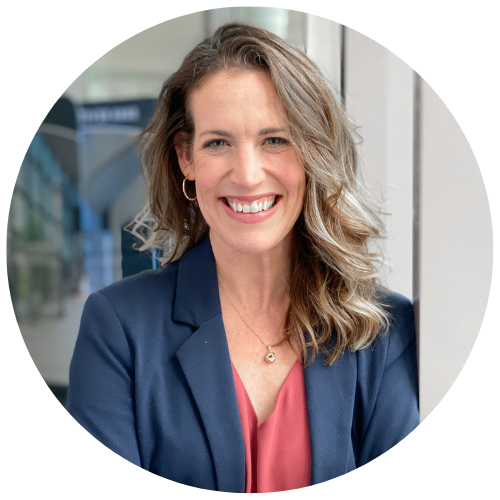
Bridget Haight
Today's Guests
